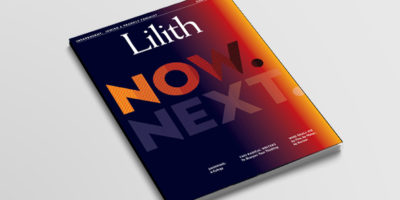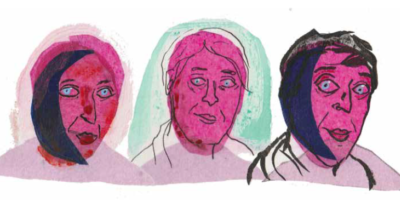Vibrant Stories from a Historic Plague
In late February, I was staring down a list nearly 50 books deep, all related to the topic I study full time: the music of Yiddish-speaking partisans, written and sung during the Holocaust. I’m almost always thinking about my research in one form or another, a constant hum that buzzes along in the background as I move through my days. My escape from the requisite anxiety and general malaise that comes from being deeply engrossed in Holocaust studies consist of the usual suspects: time spent with loved ones, meals shared with others, travel. But by mid-March, all the components of my life that buoyed me as I plowed through my sobering reading list were, necessarily, no longer possible.
My academic advisors tried to find the silver lining in the university shutting its doors and stay-at-home orders becoming widespread. “At least now,” they chorused, “you can read and research as much as you’d like!” A few of my peers expressed relief at having chosen topics of study that gave them an escape hatch when the news became too distressing, while I started sweating every time I contemplated beginning my critical literature review. My world shrank to fit the 540 square feet of my apartment, my days blurred together, and my mind raced at night as I tried to shut down my unrelenting internal monologue about genocide. I needed a distraction.
Enter the Decameron—Boccaccio’s 14th-century masterpiece on the Black Death. The Plague is the framing device, the reason that his ten main characters (seven women, three men) flee Florence for a country estate. They resolve to spend two weeks outside of the city where people are dying in the street; two days of each week are to be reserved for personal duties, and two for religious observance. Thus, ten days in need of entertainment remain. Each person tells a story nightly; by the end of their confinement, one hundred stories have been shared. The stories themselves are exemplary of the virtues, vices, and anxieties that occupied the thoughts of those living through the end of the Middle Ages and the beginning of the Renaissance. Reading a book set during the plague that serves as a point of comparison for every other pandemic in modern history does, at first glance, seem to miss the point of seeking distraction from the novel coronavirus. But picking up the Decameron felt like slipping on a wishful persona, an alternate version of myself that studied Comparative Literature as an undergraduate, had been to Italy, and felt unbothered and privileged enough to see a pandemic as an opportunity to become more cultured.
In her 2013 New Yorker review of the most recent translation of the Decameron, Joan Acocella writes wistfully that Boccaccio’s ten bards “…gather in ideal fields. Birds sing; jasmine perfumes the air. The animals don’t know to be afraid of humans: little rabbits come and sit with the young people. This is the locus amoenus, or ‘pleasant place,’ of ancient and medieval pastoral poetry. It is a sort of paradise, and that is what it is based on: Eden.”
The novel coronavirus has illuminated and exploited the vast inequality that pulses within the United States; social distancing experiences vary wildly between socio-economic brackets. I won’t wax poetic on finding some kind of common paradise in the midst of panic; far too many have died to try and universalize a sense of excitement about how great art will be after this is all over. But I have a little green space a short walk from my apartment. The jasmine is blooming, and it’s not too hot yet. I can take a blanket outside, and force myself to think about courtly love, if only for an hour or so.
Justine Orlovsky-Schnitzler is a graduate student, baker, and abortion rights advocate currently home in the South.





